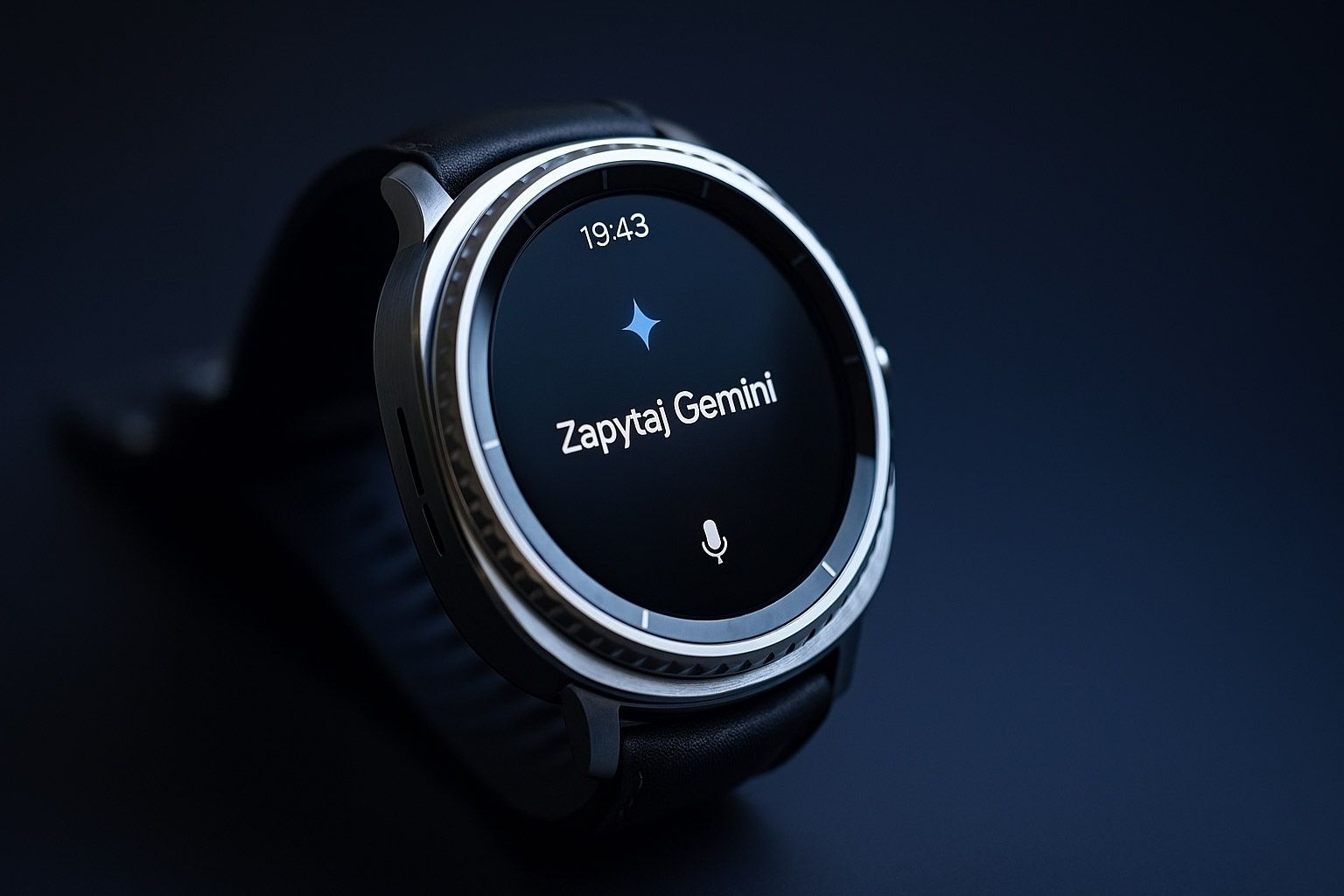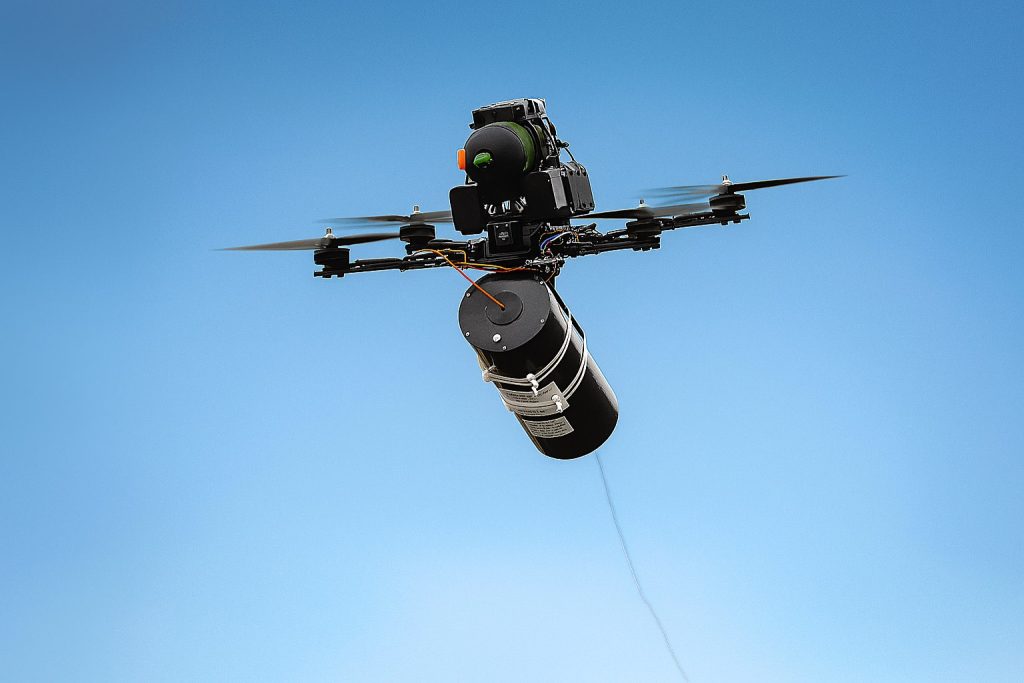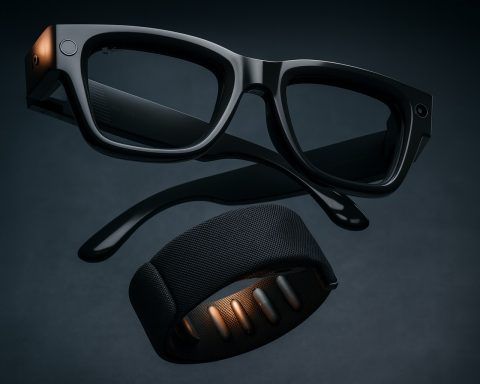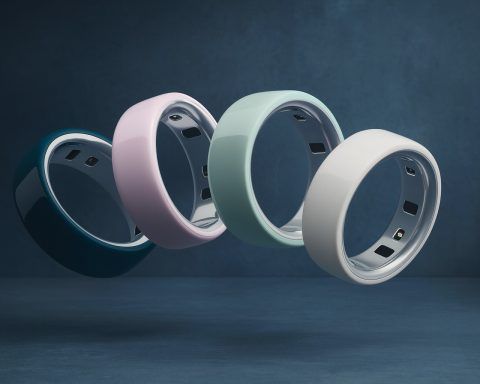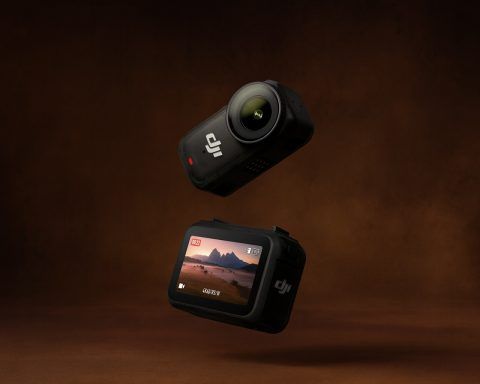-
<li Samsung’s Galaxy Watch 8 series uses an Apple-style dynamic lug quick-release band system with a button to swap straps, and all 44 mm, 8 Classic, and Ultra models share interchangeable bands, first seen on last year’s Watch Ultra.
<li The Galaxy Watch 8 Classic brings back a rotating bezel for tactile navigation.
<li One UI 8 Watch, based on Wear OS 6, debuts on the Galaxy Watch 8 series with upgrades including Galaxy AI, deeper fitness insights, and an on-device Now Bar widget.
<li Samsung confirms the nearly four-year-old Galaxy Watch 4 and Watch 4 Classic will receive One UI 8 Watch (Wear OS 6) as a final upgrade, skipping the beta.
<li Apple Watch sleep apnea detection is now available in 150+ countries on Series 9, Series 10, and Watch Ultra 2, using the accelerometer to flag potential sleep apnea after multiple nights and showing Breathing Disturbances in Health.
<li ECG and irregular heart rhythm alerts have expanded to Argentina and Serbia, with AFib History tracking live in those countries.
<li Google’s Gemini AI has rolled out to Wear OS watches, enabling natural-language interactions, but on Samsung Galaxy Watches it requires Wear OS 6 / One UI 8 Watch to function fully.
<li Pixel Watch 4 is expected to retain the Snapdragon W5 Gen 1, with leaks showing larger batteries (41 mm 327 mAh, 42 mm 459 mAh) and faster charging, and a launch alongside the Pixel 10 later this year.
<li Prime Day‑style deals include Apple Watch Series 10 discounts up to $120 off (as low as $279 for 42 mm GPS), Galaxy Watch 7 around $209.99 for base 40 mm GPS, and a 4-pack of AirTag about $64, with AirTag 2 rumored for autumn 2025 featuring Ultra Wideband and longer range.
<li Garmin’s Venu X1 debuts as a square 2-inch AMOLED, 7.9 mm thick and 34 g, with a titanium shell, sapphire crystal, 5 ATM water resistance, offline maps, and a built‑in speaker/mic, making it Garmin’s thinnest watch to date.
Samsung’s Galaxy Watch Updates Revive Old Models and Redefine Design
Samsung’s new Galaxy Watch 8 series embraces an Apple-style quick-release band connector instead of traditional spring bars, marking the end of a decade of standard watch pins. This “dynamic lug” system (first seen on last year’s Watch Ultra) uses a button on the watch to release the strap, much like Apple and Google’s bands, allowing faster swaps. All new Watch 8 models (44 mm, 8 Classic, and Ultra) share interchangeable bands under this system. Fans are also pleased to see Samsung bring back the beloved rotating bezel on the Galaxy Watch 8 Classic – a tactile navigation feature notably absent from last year’s lineup. In short, Samsung isn’t shying away from bold design changes to keep its wearables competitive.
Beyond hardware tweaks, Samsung is rolling out major software updates that even benefit older watches. The new One UI 8 Watch (based on Wear OS 6) debuted on the Watch 8 series and is packed with upgrades – from enhanced health and sleep tracking to on-device AI features. Initially, beta tests only included the Galaxy Watch 5 and newer models, leading to speculation that 2021’s Galaxy Watch 4 might be left behind. However, in a pleasant twist, Samsung confirmed the nearly four-year-old Galaxy Watch 4 and Watch 4 Classic will indeed get the One UI 8 Watch update (skipping the beta and going straight to the final release) [1] [2]. This surprise revival means those older Wear OS 3 watches – which launched with One UI Watch 3 – will receive their final promised OS upgrade, extending their lifespan with the latest Wear OS 6 features. “Samsung has told us the Watch 4 series is officially getting One UI 8 Watch, which runs on Wear OS 6,” Android Central reports, noting it’s a nice parting upgrade for loyal users [3].
So what can users expect from One UI 8 Watch? Early impressions and leaks indicate it’s a significant jump that “packs two years’ worth of changes into one”, according to Android Central’s Michael Hicks. New additions include smarter “Galaxy AI” integrations, deeper fitness insights, and even a “Now Bar” widget for contextual info (similar to what Galaxy phones offer). Reviewers are particularly impressed by the revamped widget Tiles interface, calling it an “immediate standout” that fundamentally improves how you navigate the watch. All told, Samsung appears to be “holding nothing back” with this update, injecting much-needed excitement into its wearables. And for a glimpse of the future, Samsung executives have even hinted at next-gen wearables beyond watches – including concepts like a Galaxy Ring and smart earrings or necklaces – suggesting that the ecosystem of Samsung gadgets could soon extend to jewelry.
Apple Watch Expands Health Features as AirTag 2 Rumors Swirl
Apple’s wearables are making headlines on both the health and deals front. In a recent software update, Apple unlocked its much-anticipated sleep apnea detection feature for Apple Watch users in over 150 countries. This feature, available on the Apple Watch Series 9, Series 10, and Watch Ultra 2, uses the watch’s accelerometer to monitor subtle wrist movements that correlate with breathing disturbances during sleep. If the watch detects frequent interruptions in your nightly breathing, it can flag potential signs of moderate to severe sleep apnea – prompting you to seek medical advice. Users need to wear the watch for multiple nights to gather enough data, and then any “Breathing Disturbances” appear in the Health app along with notifications if sleep apnea is likely. Alongside this, Apple expanded other heart health features: ECG and irregular heart rhythm alerts just launched in new regions like Argentina and Serbia, and AFib History tracking is now live in those countries as well. By steadily rolling out these FDA-cleared capabilities worldwide, Apple is turning the Watch into an ever more powerful health monitor on your wrist.
On the research side, Apple is exploring how AI could supercharge its health insights. A newly published Apple-backed study unveiled a “Wearable Behavior Model” (WBM) – a machine-learning AI trained on 2.5 billion hours of Apple Watch data from 160,000 volunteers. Unlike traditional approaches that look at instantaneous vitals like heart rate or SpO₂, this model analyzes long-term patterns in how you move, sleep, and exercise. The results are impressive: the AI could detect certain hidden health conditions more accurately than using raw sensor data alone. For example, by combining the AI’s behavioral analysis with biometric data, the model could even predict pregnancy with up to 92% accuracy in the study – essentially spotting subtle changes weeks before a person might otherwise know. It also excelled at identifying things like whether someone was taking specific medications (e.g. beta blockers) or fighting off a respiratory infection. While this is still research, it shows the potential for Apple to build advanced health-prediction features into future devices. As TechRadar notes, it’s an exciting prospect – though there are serious privacy and medical questions to answer before your watch tells you you’re pregnant or ill before you even know.
Meanwhile, Apple’s tracking gadgets are in the news thanks to steep discounts and a sequel on the horizon. During this month’s sales, the Apple Watch Series 10 hit its lowest price ever – up to $120 off its regular price. Some configurations of the flagship watch dropped to $279 (for the 42 mm GPS model, typically $399) as Prime Day deals lingered. Retailers like Walmart and Amazon offered these all-time lows, letting many users snag Apple’s latest watch for roughly 30% off. (These deals likely won’t last long as inventory normalizes.) Apple’s AirTag item trackers also saw eye-catching promotions – a 4-pack of AirTags fell to about $64 (around $16 each), and one post-Prime Day promo even offered “buy 2, get 2 free” on the coin-sized trackers. It’s no wonder a tech columnist at CNET quipped that he now “puts AirTags on basically everything” he owns, given how useful and affordable these little finders have become.
Looking ahead, rumor mills suggest we’ll see AirTag 2 possibly debut later this year. Reports from insiders like Mark Gurman say Apple is planning to announce the second-gen AirTag in autumn 2025, likely around the iPhone 17 launch. The AirTag 2 is expected to keep a similar design but feature a new Ultra Wideband chip that could triple its effective tracking range. That means Precision Finding might work from 300+ feet away (vs ~100 ft today). Apple also aims to improve privacy and anti-stalking measures – for instance, the built-in speaker may be more securely integrated so it can’t be easily disabled by bad actors. Code in iOS betas hints at new battery alerts (both “low” and “very low” warnings) for AirTag 2. Despite speculation about a rechargeable battery, insiders believe Apple will stick with a replaceable coin cell for simplicity. The current AirTag launched back in April 2021, so a refresh is overdue. If the rumors pan out, by this fall we’ll have an AirTag that’s longer-range, smarter, and safer – a welcome upgrade for the millions of users who rely on these tiny trackers to keep tabs on bags, keys, and more.
Google’s Pixel Watch Rumors and Wear OS Gets Gemini AI
Google’s wearable ecosystem has its own buzz of late – particularly around the upcoming Pixel Watch 4. According to an Android Authority exclusive, the Pixel Watch 4 may not get a new processor this cycle, sticking with the same Qualcomm Snapdragon W5 Gen 1 chip used in the Pixel Watch 2 and 3. That news disappointed some hoping for a leap in performance – but Google appears to be compensating by boosting battery and charging specs. Leaked info from inside Google shows both sizes of the Watch 4 will sport larger batteries: the 41 mm model jumping from 307 mAh to 327 mAh (~7% increase), and the larger model from 420 mAh to 459 mAh (~9% increase). Faster charging is also on the menu (exact figures weren’t given, but we can expect a quicker top-up than current models). These tweaks aim to address one of the Pixel Watch’s weakest points – battery life – which has barely changed since the first-gen Watch in 2022. If these reports hold true, the Pixel Watch 4 could finally last a bit longer through the day, even if its brains remain the same. Google is expected to launch the new watch alongside the Pixel 10 phones later this year, so we’ll soon see exactly how they’re “differentiating this year” beyond these under-the-hood changes.
Even as Pixel hardware evolves incrementally, Google just delivered a big software upgrade to the entire Wear OS platform: the arrival of its “Gemini” AI assistant on smartwatches. Gemini is Google’s new generative AI (akin to an upgraded Google Assistant) that can understand natural language more deeply and perform complex tasks. As of this week, Gemini has begun rolling out to Wear OS watches from Google, Samsung, Oppo, OnePlus, Xiaomi and others. It comes as an update to the Google Assistant app on watches. With Gemini on your wrist, you can interact more conversationally – for example, ask follow-up questions, get summaries, or issue multi-step commands – without pulling out your phone. Google highlights scenarios like checking the weather (“Do I need an umbrella today?”) or sending a quick text by voice while you’re running or cooking, all handled fluidly by the AI on the watch. Essentially, it promises a more “natural, intelligent and capable” voice assistant right on your wrist, thanks to the same advanced language models that power Gemini on Pixel phones.
There is a catch for some smartwatch users, though. According to SamMobile, the Gemini update requires Wear OS 6 (One UI 8 Watch) to fully function on Samsung Galaxy Watches. For instance, a Galaxy Watch 4 can install the Gemini update from the Play Store, but until that watch gets the One UI 8 (Wear OS 6) upgrade, it will still behave like the old Google Assistant. In tests, the app even kept the Assistant logo and interface on a Watch 4 running older software, indicating the AI features were dormant. Samsung has confirmed the Watch 4 will get One UI 8 Watch later this year – so legacy users will eventually gain full Gemini capabilities, but not right away. The bottom line: Gemini is here, but you’ll need the latest Wear OS on your device to truly experience this smarter assistant. Once enabled, it’s much better at understanding context and even ties into Samsung’s own apps (like Samsung Health) for voice-controlled queries and actions [4]. It’s a significant upgrade to Google’s wearable experience – effectively bringing a bite-sized version of ChatGPT-like smarts to your wrist.
In other Google gadget news, there were some notable Wear OS device deals as retailers clear inventory. The current Pixel Watch 3 (released last year) hit its cheapest price yet during the sales – the LTE model was $115 off its usual price, bringing it well under its $400+ MSRP. Samsung’s last-gen Galaxy Watch 7 also saw a major price cut: down by about $90, with the base 40 mm GPS model on sale for $209.99 (originally ~$300). Samsung frankly seems eager to “get rid of” remaining Watch 7 stock to make room for the new Watch 8, and bargain hunters are reaping the benefits. Even Google’s older Pixel Watch (1st gen) popped up in promos – one headline shouted that a 45 mm Pixel Watch LTE was on sale for $115 off during Prime Day. So while the cutting-edge devices get all the hype, it’s also an excellent moment to snag last year’s still-very-capable smartwatches at deep discounts.
Garmin’s Venu X1 Takes on Apple Ultra, Plus Big Discounts on High-End Wearables
Garmin has set its sights on the luxury smartwatch space with the new Venu X1, a sleek sport watch that some are calling Garmin’s first true Apple Watch Ultra competitor. Unlike Garmin’s traditional round designs, the Venu X1 sports a “familiar square design” with a ginormous 2-inch AMOLED display stretching nearly edge-to-edge. Reviewers have been wowed by this screen – Runner’s World notes the display is super bright and makes an Apple Watch Ultra 2 look “a little puny” in comparison. Despite the huge screen, the X1 is astonishingly slim: the case is just 7.9 mm thick and weighs only 34 g, making it Garmin’s thinnest watch to date. It’s built from premium materials (titanium shell, sapphire crystal) for durability, water-rated to 5 ATM, and manages to pack in advanced features like offline maps, a speaker/mic for calls, and dozens of fitness metrics. Essentially, the Venu X1 balances Garmin’s renowned health tracking and GPS accuracy with a style and app experience more akin to an Apple Watch. “It satisfies both fitness enthusiasts and style-conscious users who normally wouldn’t consider anything other than an Apple Watch,” notes Runner’s World’s review. The main compromise seems to be battery life – with always-on display, the X1 might only last a couple of days, not the week-long endurance some other Garmin models boast. Still, for users wanting Garmin’s platform in a more modern, Ultra-like form factor, the Venu X1 delivers on that promise.
Even as the Venu X1 grabs attention, Garmin’s other premium watches quietly received massive post-Prime Day discounts. If you’re more inclined toward Garmin’s hardcore adventure and marine watches, now might be the time to buy. For example, the flagship Garmin Fenix 7 Pro Sapphire Solar (a feature-packed multisport GPS watch) dropped by $400 off its regular price in an extended deal – a huge price cut that brings this expensive device down to more manageable levels. The stylish AMOLED-equipped Garmin Epix Pro was likewise on sale at its lowest price ever. And in a niche but noteworthy deal, Garmin’s Quatix 7X Solar Edition – a specialized marine GPS smartwatch – went on sale for nearly 50% off. (The Quatix is basically a Fenix variant for boaters, so that sale was a big win for seafaring techies.) Many of these deals are time-limited, but they illustrate how high-end wearables from Garmin (and others like Suunto and Polar) are seeing unprecedented discounts as the mid-summer sales season winds down. Even Fitbit’s fitness watches got in on the action: the new Fitbit Charge 6 was marked down to $93 on Amazon – and that includes 6 months of Fitbit Premium service – while the simple Fitbit Inspire 3 hit a record low around $60. In short, whether you’re after a top-tier adventure watch or a basic fitness band, 2025’s Prime Day aftermath has offered something for everyone’s budget.
Lastly, for those following Nothing, the startup from OnePlus co-founder Carl Pei, there’s news in the affordable smartwatch arena. Nothing’s budget-oriented sub-brand CMF appears ready to launch a new CMF Watch 3 Pro, and leaks have revealed many details. Images of the retail box (surfaced via Chinese forums) show the Watch 3 Pro will have a 1.43-inch AMOLED display with auto-brightness, a built-in GPS (dual-band GNSS), over 130 sports modes, and up to 13 days battery life on paper. Notably, the device depicted is round with a physical rotating crown on the side. The previous CMF Watch Pro (No. 2) had a smaller 1.32″ screen and also included GPS, retailing around $79 – so we can expect this new model to come in under $100 as well. If the packaging is legit (and Gadgets & Wearables confirms the serial numbers check out, meaning it’s real), Nothing could soon offer one of the best-specced smartwatches in the sub-$100 category. On a similar note, rival Amazfit has been busy updating its own affordable lineup: the popular Amazfit Bip 6 just got upgraded to Zepp OS 5.0 via a firmware update, bringing a fresher UI and features to that budget watch. Amazfit also issued a patch for its newer Active 2 watch to fix strength training tracking bugs, and rumors hint at a high-end Amazfit Balance 2 XT in the works. Clearly, even outside the Apple/Samsung/Google realm, there’s a lot going on in the wearables world – from ultra-thin premium devices to the latest cheap-and-cheerful fitness trackers.
AI Gadgets and Quirky Tech: Translator Earbuds, Wearable Note‑Takers, and More
Not all the exciting gadget news is about watches and phones – a wave of innovative devices is marrying AI and hardware to make our lives easier (or at least more interesting). One example is the new Timekettle T1 translator, a handheld gadget reviewed by Wired as an “adept global translator that’ll work even offline”. This pocket-sized device can translate dozens of languages in real time, and crucially it has an offline mode for when you’re away from Wi-Fi or cell service. Travelers can speak or even snap a photo of text, and the Timekettle will produce translations on the fly – acting like your personal Babel fish. It even comes with a year of built-in global data for online use, but the fact that it supports offline voice and image translation in 40+ languages is a standout feature in a post-smartphone translator. With international tourism rebounding, a gadget like this shows that dedicated devices still have a niche, even when translation apps exist on our phones. As Wired puts it, the T1 is intuitive and works “whether you’re connected or not” – a big plus if you’ve ever been lost in a foreign country with no signal.
Another fascinating newcomer is the Plaud NotePin, a tiny wearable AI voice recorder that has journalists, students, and productivity-hackers buzzing. About the size of a USB stick (just 2 inches long and half an ounce in weight), the NotePin clips to your shirt or lanyard (see image above) and can record hours of conversations or meetings, then automatically transcribe and summarize them using AI. Tom’s Guide awarded the Plaud NotePin one of its “Best AI gadget” awards for 2025, calling it a “complete game changer” for in-person note-taking. Unlike a regular voice recorder, the NotePin connects to an app that uses advanced AI (GPT-4.1 and other models) to turn your recorded speech into organized notes, summaries, even action items. In practice, it means you can focus on a lecture or interview without scribbling furiously – the device will capture everything and distill it for you afterward. Reviewers were initially skeptical, but found that Plaud’s transcription is highly accurate and the device is “super inconspicuous” – it can even be worn as a necklace or hidden on a wristband. One journalist wrote, “Not only can the Plaud NotePin accurately transcribe meetings, classes, interviews and more, it is also incredibly easy to wear… It’s an assistant that helps me get more done” without getting in the way. During Prime Day, the NotePin briefly dropped about 20% in price (to ~$169) as an introductory offer, but even at full price it’s gaining traction as a must-have productivity gadget. In an era where everyone is trying to utilize AI assistants, the Plaud NotePin stands out by embodying AI in a simple physical device – no chatbots or fancy prompts needed, just clip it on and hit record.
Finally, a couple of quick hits in the gadget world: A fun piece on How-To Geek this week explains “How Magnets Make Modern Gadgets Great.” It turns out those little magnets we once feared (remember the warning to keep magnets away from computers?) are now everywhere in tech – from the MagSafe connectors that snap your iPhone accessories in place, to the tiny linear motors that give haptic feedback in game controllers. Magnets are the unsung heroes enabling wireless charging, secure iPad covers, and vibration motors, as the article highlights. And in a sign of the summer season, there’s been a surge of interest in portable handheld fans as heatwaves hit various regions. Lifestyle publications from Vogue to The Sun have run comparisons of the best mini fans – one £12 foldable fan from Amazon “blew away” the competition in a UK test, and TikTok is filled with people showing off their purse-sized cooling gadgets. It’s a reminder that sometimes the hottest (no pun intended) gadgets aren’t high-tech at all – they just solve an immediate problem. Whether it’s staying cool with a USB fan or staying connected with an 86%-off smartwatch you impulsively bought for $23, the tech world in mid-2025 is full of surprises. From major industry updates down to quirky bargains, today’s gadget news underscores the incredible breadth of innovation – there’s something new for every kind of tech enthusiast. Stay tuned for more, because at this pace, who knows what next week will bring!
Sources: Samsung One UI 8 Watch update [5]; Android Central on Watch 4 revival [6]; 9to5Google on Watch 8 band design; CNET via social on rotating bezel; MacRumors on Apple Watch sleep apnea; MacRumors on Apple Watch AI health study; 9to5Toys on Apple Watch Series 10 deals; MacRumors on AirTag 2 rumors; 9to5Google on Pixel Watch 4 leaks; SamMobile on Gemini for Wear OS; Google Blog on Gemini features; Runner’s World on Garmin Venu X1; Gizmodo on Garmin Quatix deal; Notebookcheck on CMF Watch 3 Pro; Tom’s Guide on Plaud NotePin; Wired on Timekettle T1.
References
1. www.androidcentral.com, 2. www.androidcentral.com, 3. www.androidcentral.com, 4. www.sammobile.com, 5. www.androidcentral.com, 6. www.androidcentral.com
